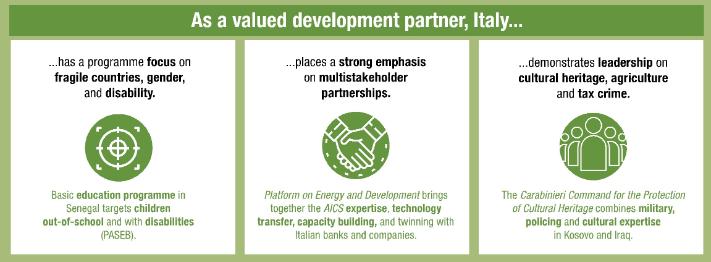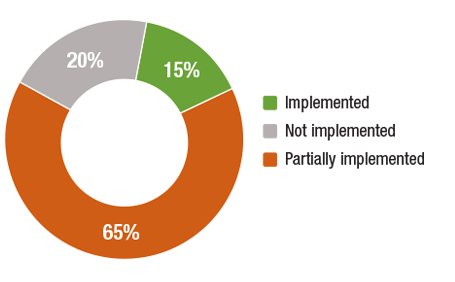Publications

OECD Development Co-operation Peer Reviews: Italy 2019
The OECD's Development Assistance Committee (DAC) conducts periodic reviews of the
individual development co-operation efforts of DAC members. The policies and programmes
of each DAC member are critically examined approximately once every five years. DAC
peer reviews assess the performance of a given member, not just that of its development
co-operation agency, and examine both policy and implementation. They take an integrated,
system-wide perspective on the development co-operation and humanitarian assistance
activities of the member under review.
Italy is strongly committed to multilateralism, and it uses its convening power as
well as expertise in co-operation to make the country a leading voice on issues such
as agriculture and cultural heritage. The country’s commitment to leaving no one behind
is particularly apparent through the focus on gender and disability. However, the
country would benefit from reversing the recent decline in official development assistance
(ODA), building a stronger and better-skilled workforce, forming a coherent, whole-of-government
approach to migration and development, and creating a system to manage for results.
Published on November 18, 2019Also available in: Italian
In series:OECD Development Co-operation Peer Reviewsview more titles
TABLE OF CONTENTS
| Conducting the peer review | |||||||||||||||||
| Abbreviations and acronyms | |||||||||||||||||
| Executive summary | |||||||||||||||||
| Findings from the 2019 Development Co-operation Peer Review (Infographic) | |||||||||||||||||
| The DAC’s main findings and recommendations | |||||||||||||||||
|
Secretariat’s report8 chapters available
|
|||||||||||||||||
Powered by OECD iLibrary

